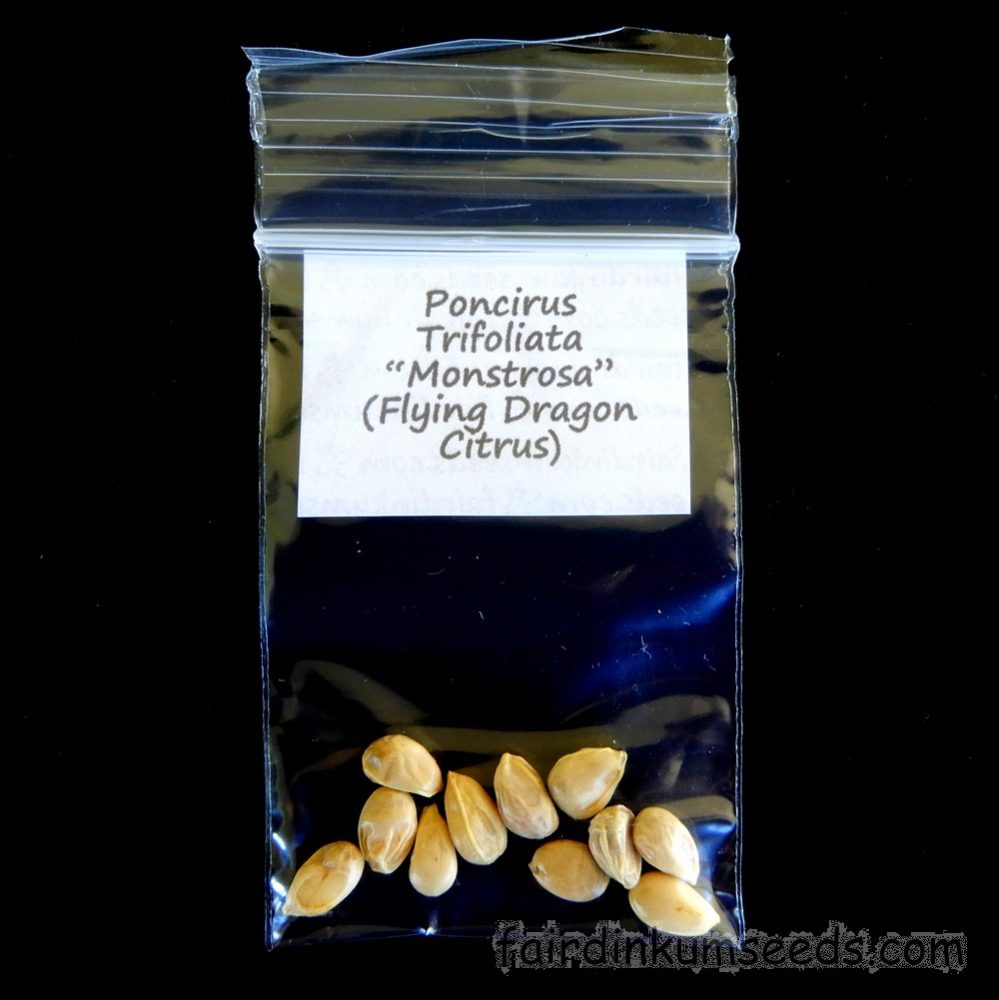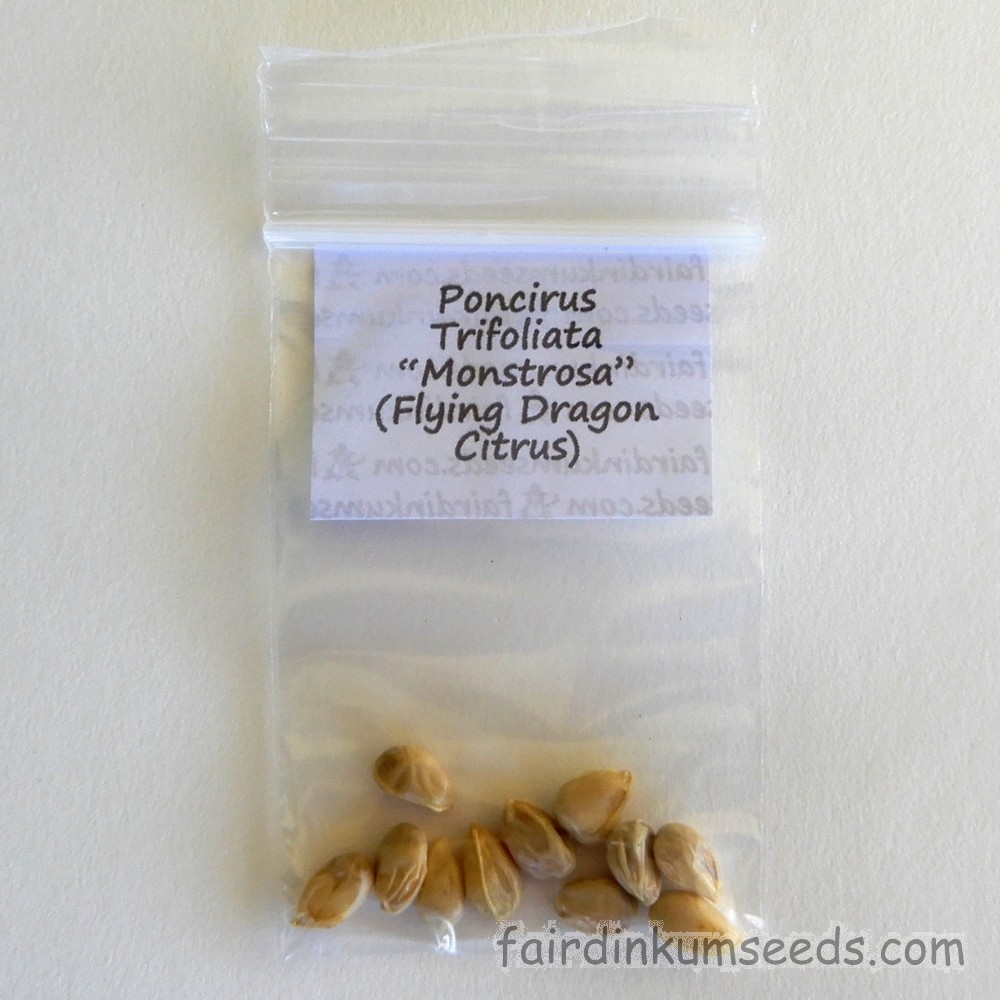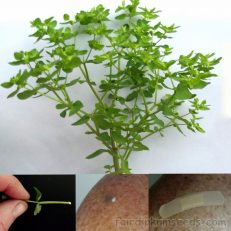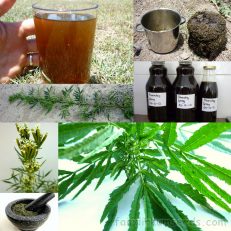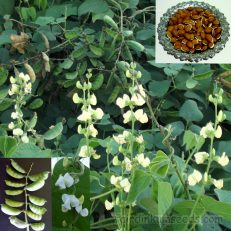Please read text!
Poncirus Trifoliata Monstrosa Flying Dragon Citrus Seeds
Packet of 10+ freshly harvested very rarely available seeds!
I have loved this fella since the very first time I saw it, and I am super excited to have a few packs available for sale.
Originally from China it is has been a popular plant in the USA and Europe since the early 1800’s.
This is the first time growing it myself and therefore I can’t offer advice based on experience.
I can tell you what I have done based on a hell of a lot of reading and talking to others though, and I reckon what I am doing should give a decent chance of success.
I took half the seeds and planted them straight away in a sandy soil mix.
As they are fresh I should have a decent germination rate though it could take several months.
The other half I left in the plastic bag.
I then removed the paper label and filled the plastic bag with sand, added a couple drips of water and placed it in the vegetable or butter section of the fridge(Not freezer, do not freeze!).
I will then leave then there for ~2months to simulate a heavy Winter season.
After that I will remove them carefully and plant as per normal in a sandy soil.
As the plant thinks winter has past and Spring has sprung in theory they should all germinate rapidly.
So yeah, I have planted half and cold stratified the other half, and I have firmly crossed my fingers.
I suggest you do the same understanding that these really rarely available seeds are a gamble.
They should not be dried, and if mouldy on arrival a quick dip in hydrogen peroxide might be worth a thought.
In my experience with other citrus this minor fungal attack isn’t an issue as it feeds on the sugars and carbohydrates in the fibrous husk, not the actual kernel of the seed.
They will be removed from the fruit and sent the following day to ensure freshness but that’s pretty much all I can do.
Despite being super fresh you may not have success.
Why would you want to grow it?
It is an amazing looking citrus relative that has hooked curved spines that make a tight impenetrable hedge.
I am led to believe it is easy to germinate, and it is very disease resistant and hardy.
It can handle Winters temperatures down to -23 Celcius (-10F)!!
It can also handle 45+Celcius Summer temperatures, and this hardiness and disease resistance is one of the reasons it is the main rootstock used for Citrus species all around the world and pretty much any citrus species can be grafted onto it to improve hardiness and make an all over smaller and easier to manage plant.
It produces an edible fruit that tastes like a bitter slightly resinous orange, and boiled up with a little star anise it makes a great cordial.
The fruit is mildly furry with a very fine velvety skin, and the trees can start to bear their first fruit in just 2-3years!
It can be used to make marmalade, sliced and dried for medicinal teas, candied, salted and pickled, pretty much anything you use any other citrus for you can do it with this, with the only downside being the large amount of seeds and small fruit size.
It has high pectin content meaning if you keep a couple skins in the freezer you can add them to other jams that are not setting well.
Very handy!
It used to be considered Citrus trifoliata and was commonly sold as trifoliate orange or hardy orange.
This much rarer “monstrose” form is grown for the ornamental value of the hooked curved spines and tight compact growth.
It looks super cool and if you like citrus then this fella just has to be in your collection!
I love it and I really hope we all get a heap of seedlings, but like I say, this one is a gamble and you might fail.
Please keep that in mind and if you don’t want to gamble leave them for someone else to have a crack at.

